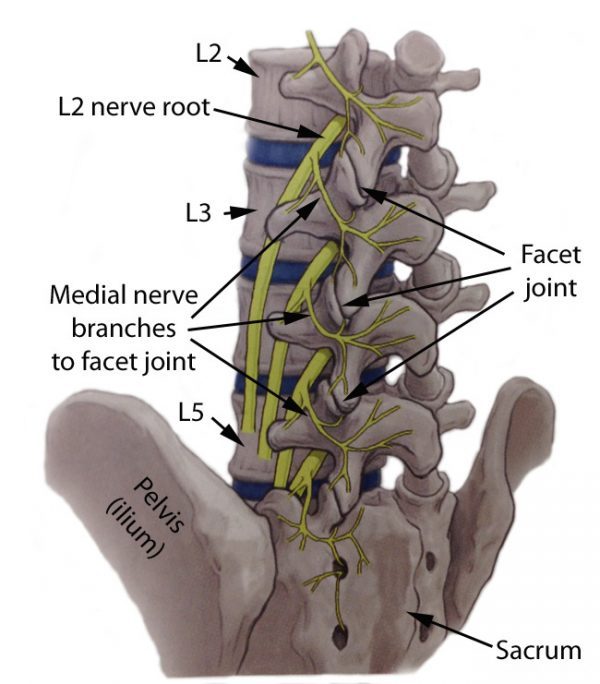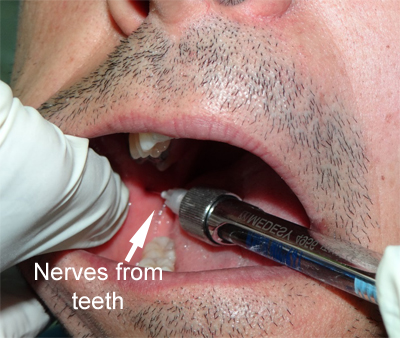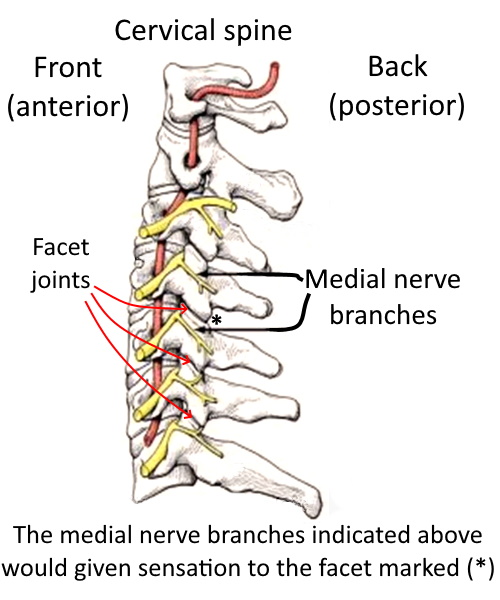Radiofrequency Ablation (burning the nerve to the facet joint)
For patients with arthritic facet joints, an option for treatment of that pain is to do a procedure which involves burning the nerves that provide sensation to those arthritic joints.
This procedure is called radiofrequency ablation.
To define these terms a bit more:
radiofrequency refers to a high frequency alternating electrical current.
ablation means tissue destruction…in this case, the nerves to the arthritic joints.
Each facet joint receives a small nerve branch (called the medial branch) from the nerve above and the nerve below that particular facet joint.


Another way to think about this procedure is to consider what happens when a dentist blocks the nerves from a painful tooth. The nerves transmit the painful impulses to the brain, and the injection blocks that transmission, even though the tooth might still be rotting.
This procedure, instead of using a short lived anesthetic agent, blocks the nerve impulses by making a small burn where the nerves live, hopefully for relief that lasts 3-12 months.

Special needles (left) are used to transmit the electrical energy to these small nerves. The needles are insulated, except at the very tip.
By delivering the electrical energy near these small sensory nerves (right), they can be rendered dysfunctional thus providing relief of the pain from arthritic facet joints for many months.


Cervical Spine
For the Cervical Spine, the same ablation procedure can be done, but the nerves and joints are smaller.
In the diagram to the right, the joints on the back side of the cervical spine, the facet joints, are indicated with the red arrows. These joints get their sensation from small nerve branches (called medial branches) that come off the nerves that go down the arms, one above and one below each facet joint.
Once injections with some numbing medicine have confirmed that the facet joint is a source of the pain, these small nerve branches can be burned in a similar fashion, giving relief that can last several months and even upwards of a year.
If the pain returns, the procedure can be repeated.
Other FAQ’s:
Does this procedure hurt?
Usually very little. First, most patients have some sedative with an anesthetist present, so they are very calm and often remember very little of the procedure. There is a small pinch for the local anesthetic before the needle is introduced through the skin.
How do you know you don’t burn a more important nerve?
The nerve is stimulated to be sure there is not pain or muscle stimulation down the leg before the ablation process is started. If there is even a hint of pain down the leg, the position of the ablation needle is changed.
